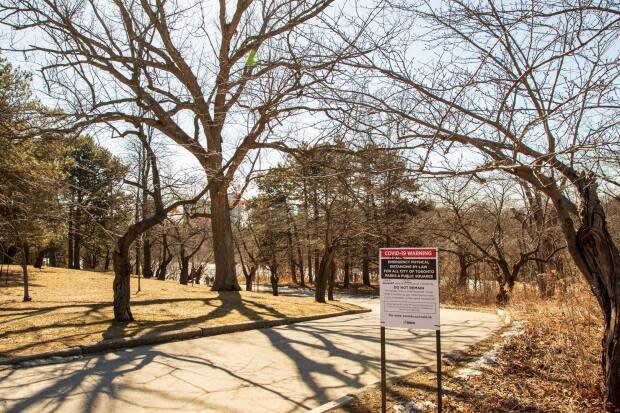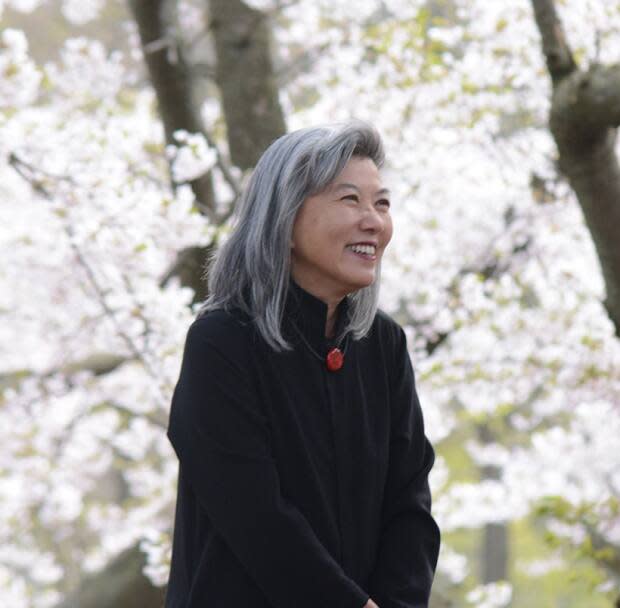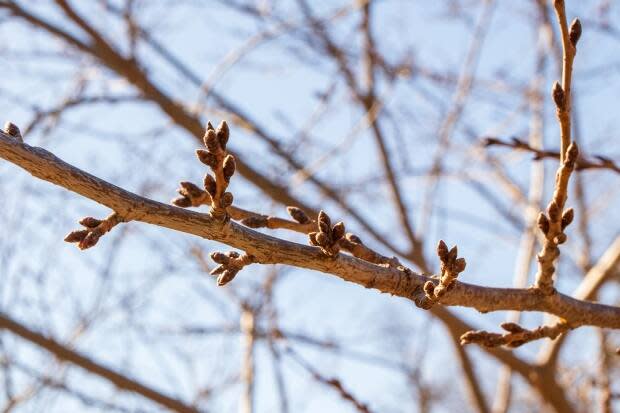You may have to view High Park's cherry blossoms virtually again. Here's why that could be a good thing

High Park's famous cherry blossoms are set to bloom just over a month from now, but the city says it's still unsure whether it will close the park and limit the public to virtual viewings as it did last year to slow the spread of COVID-19.
Even though the city has said it will release more information closer to the bloom, Steve Joniak, a cherry tree enthusiast for many years, expects virtual tours in 2021. He worked with the city last year to plan the viewings and he is helping again in 2021 to come up with a similar plan for the trees, which are also known as Sakura.
"I can understand people getting upset ... I was upset last year; this is one of my passions," said Joniak, who writes the Sakura In High Park blog.
But he explained banning the crowds will not only keep the aging trees safe from the wear and tear they experience at the height of blossom season, it will also protect people from the novel coronavirus, which is now mounting a third wave that has prompted the province to hit an Ontario-wide "emergency brake" to battle deadlier and more transmissible variants of concern.
'We are trying to keep people safe'
"People need to remember there is a reason why we are doing this. As beautiful as it is, the more important aspect is that we are trying to keep people safe and healthy."
Noriko Maeda, a Japanese calligraphy artist and a lecturer at the University of Toronto and the University of Waterloo, agrees.
This pandemic has brought to light those simple joys of life we took for granted... things we didn't know would not be possible now. - Noriko Maeda
Maeda explained that going to see the cherry blossoms is a very important Japanese tradition that not only connects people and nature, it's also a time of renewal and farewell.
"This pandemic has brought to light those simple joys of life we took for granted ... things we didn't know would not be possible now," she told CBC Toronto.
As an artist, Maeda not only loves their off-pink look, she has deep connections to the trees from her upbringing — memories associated with the blossoming of the Sakura trees that stretch from when she was a child playing with her parents to the present day playing with her own children.

Maeda is still excited for the blossom, even though she might not be able to see them in person at High Park again this year. She says looking back and being grateful for the memories you have is an important part of Japanese philosophy attached to the blossoms.
"I am looking forward to appreciating the cherry blossom in perhaps a non-traditional way through sharing my past memories and look forward to the spring when I can smell the petals floating through the air," she said..
Virtual viewings are not all bad, Joniak explains
High Park's cherry blossoms are one of the biggest spring attractions in the city, with hundreds of thousands of people annually coming to the park to see them. The blossoms last around five to 10 days.
The cherry trees were originally planted in 1959 as a gift from Japan to Canada, after this country received Japanese refugees at the end of the Second World War.
Virtual viewing can be positive for the trees themselves, Joniak added.
The old and relatively fragile trees are reaching the end of their life and have been getting damaged every year with the large crowds of people taking pictures. Even when the park was closed in 2020, people were caught climbing the trees at night.

"Once [people] start damaging the trees, the damaged portions invite insects, funguses and disease to get into the tree," Joniak said.
He didn't see new damage during his last visit to the park, most likely because of COVID-19, he said.
Both Maeda and Joniak said there are other areas in the city where you can safely experience spring blooms, including.
But people can still take a close peek of the blossom at other Toronto locations, including::
The Robarts Library.
Centennial Park.
Broadacres Park.
Trinity Bellwoods Park.
Toronto Island Park.

